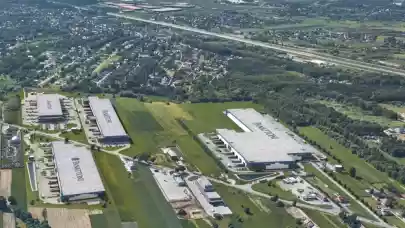
Higher borrowing costs and the price gap between buyers' and sellers' expectations are some of the reasons why transaction volumes are significantly below the 10-year average level of ca. €10 billion. This is according to a commercial real estate investment volumes survey by Colliers presented at a February meeting of Czech and Slovak investors and other financial experts.
Investment volumes in Central and Eastern Europe (CEE-6) fell by around 52% to €5.1billion in 2023. Domestic capital was the most active with an impressive 56% share of total regional volumes.
Czech capital secured the highest share of volumes with 28%. The total investment volume in the Czech Republic in Q4 2023 was €164 million, with office assets accounting for the majority of activity. The full-year results for 2023 were comparatively weak, with investment volumes reaching only €1.15 billion and declining for the third consecutive year. The 2023 volume also represented the lowest total recorded since 2014. In addition, the number of transactions only just surpassed the 40-figure mark.
In terms of sector breakdown, retail saw a recovery in 2023, leading the way with a 41% share of total transaction volumes, although this was mainly driven by two significant transactions. Office real estate came in second with a 34% share, although if measured by the number of transactions completed it would have taken the lead spot. Residential properties accounted for a 13% share and industrial and logistics (I&L) properties represented only 9% of volume.
Despite a slowdown of some 32% in investment volume, the Czech Republic remained a destination attractive enough to benefit from sufficient investor capital to defend its position as the 2nd most sought-after location within the CEE-6 region.
"The growth in residential transactions was mainly driven by an increase in the number of investor groups focused on this asset class. At the same time, more developers were open to the idea of disposing of projects as the market experienced a slowdown in apartment sales. Forward purchases were the most typical model used for acquisitions of newly built residential projects that were sold to investors," explains Omar Sattar, Head of Investment Services at Colliers.
Yields continue to move out for some asset classes. This is largely due to the gap between bid and offer prices, which remains a feature of the current market conditions. However, according to Colliers, this gap is expected to narrow during 2024. "Our view of prime yields at the end of 2023 was 5.25% for industrial and logistics (I&L) assets, 5.50% for offices and 6.00% for shopping centres," explains Omar Sattar.
Expectations for 2024 can be described as moderately optimistic or even positively realistic. Given current conditions, especially in the context of persistently elevated credit costs, volumes in 2024 in the CEE-6 region could reach up to €6.0 billion. In the Czech Republic, total transaction volumes could end up at the level of previous years, i.e., ranging between €1.2 and €1.4 billion and halting the current trend of declining annual transaction volumes.
Although the CEE region has a relatively younger real estate stock compared to Western Europe, ESG aspects can be expected to play a more important role in 2024 than in recent years. This view is supported by a recent Colliers survey of investors. According to that poll, ESG is becoming a key strategic element of investment decision-making, particularly in EMEA and APAC. The proportion of investors moving into the sale and acquisition phase of ESG-based strategies has reached 25%, up from just 10% two years ago. Thus, it can be expected that in 2024, value-added divestment and acquisition opportunities will come to the market and investors will raise capital to convert existing assets from brown to green.
In Slovakia, 19 investment transactions were recorded in 2023 with a total volume of approximately €668 million. The majority of transactions were in office (71%), followed by retail (15%) and industrial (14%). 91% of buyer capital came from the CEE region, with a further 7% from the Americas and 3% from the wider EMEA region.
In Q4 2023, investment returns remained in line with the previous quarter. Office yields were recorded at 6.25% and 7.75% for developments in the CBD and periphery, respectively. Industrial yields in the Bratislava region stabilised at 6.00%, with the national average estimated at 6.25%. Retail yields for traditional shopping centres were then estimated at 6.50%.
For 2024, it is expected that asset prices in the investment market will continue to move towards more realistic levels and achieve equilibrium. The rebalancing of prices is expected to lead to more activity in the market as buyers are under pressure to deploy capital and sellers face loan repayments and refinancing. Industrial and logistics properties will remain the preferred asset type for domestic and foreign investors. Specialist properties such as data centres and cold/dark storage will also be of interest.



